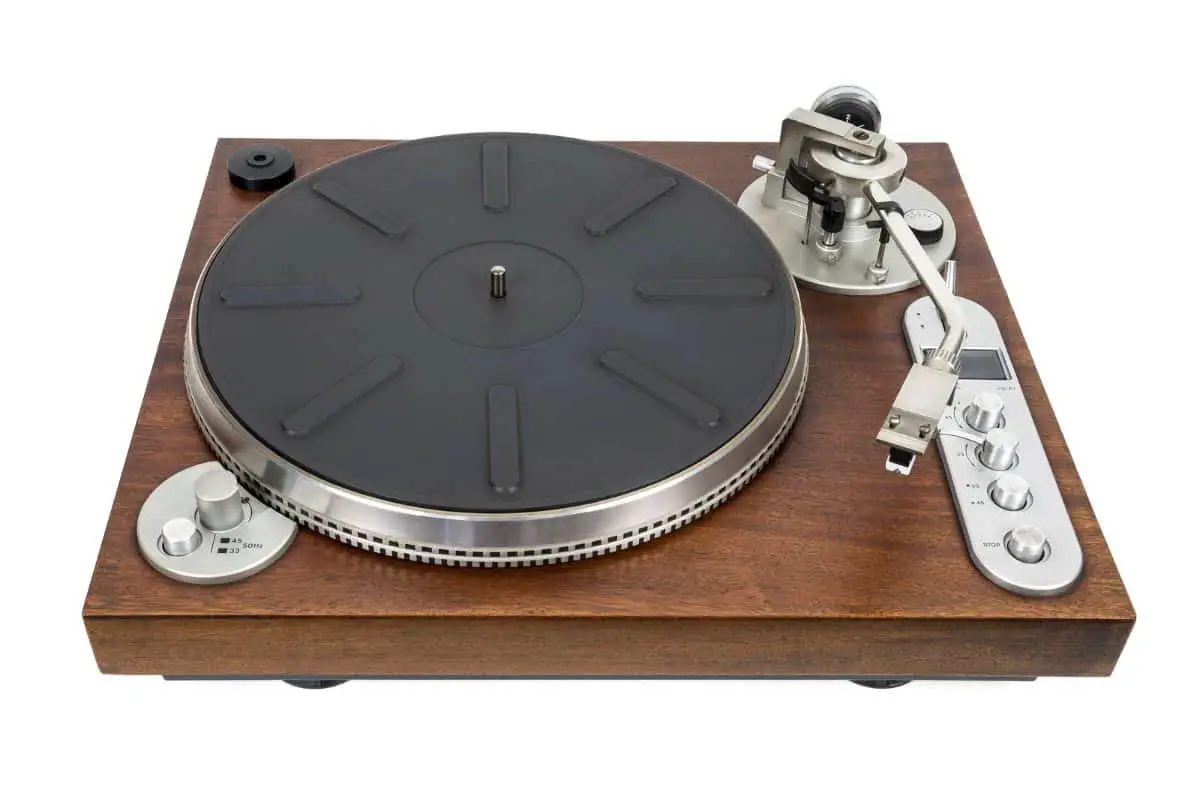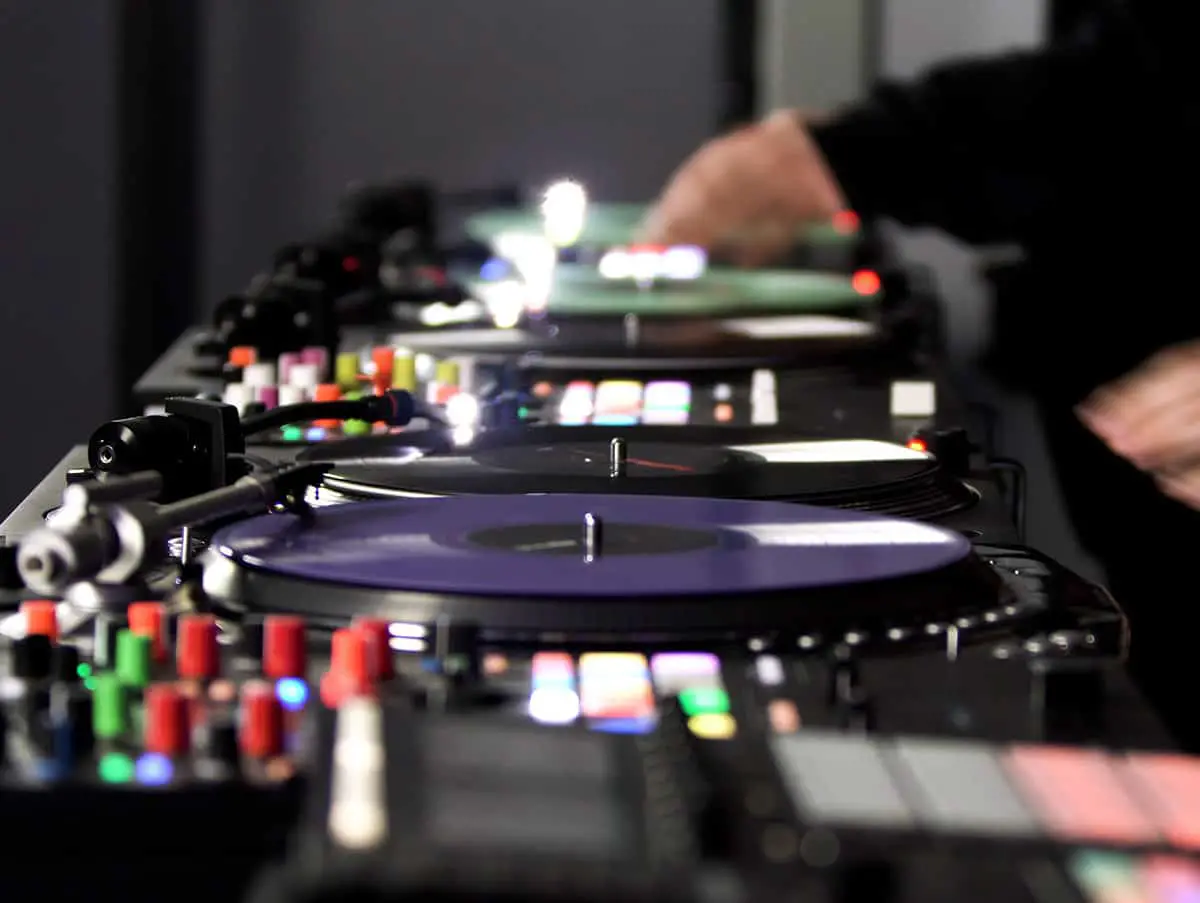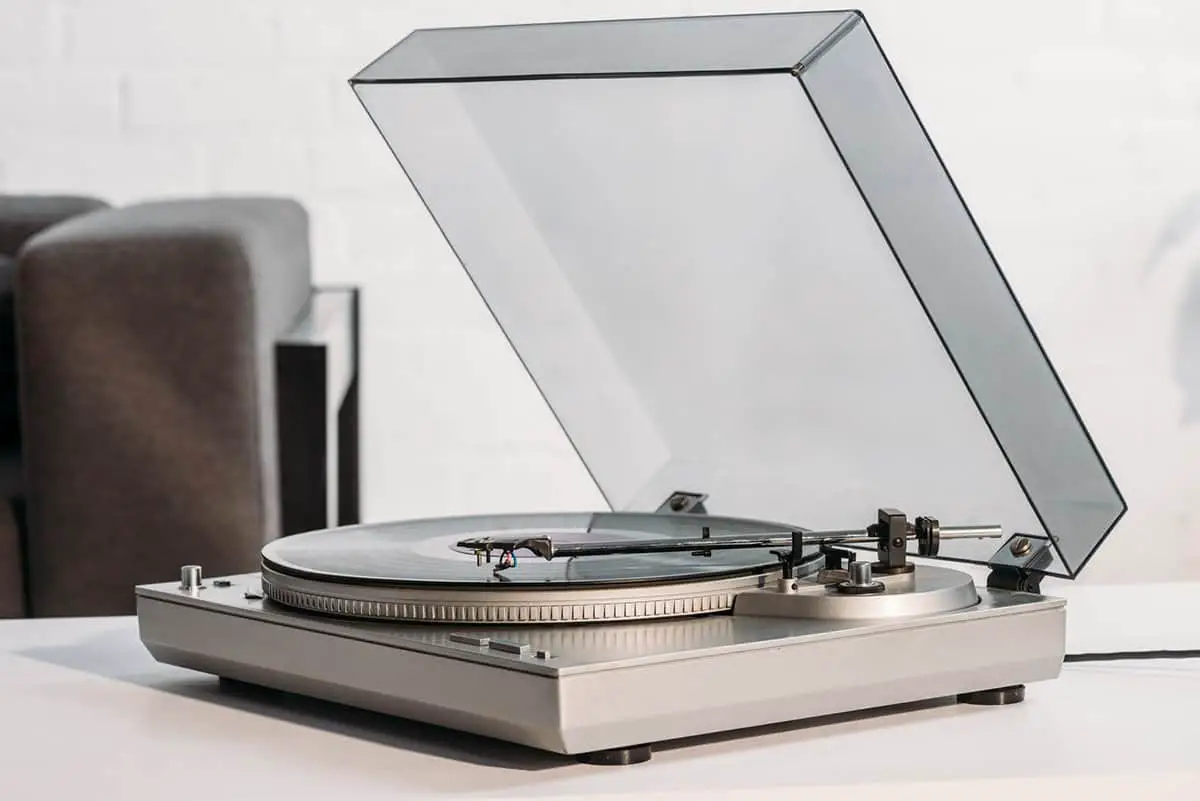This post contains affiliate links.
Relaxing to some classic vinyl and a funny smell like burning starts to meander across the room. It’s subtle but makes you wonder why the turntable smell like it’s burning has entered your nose. Before your house burns down, it would be best if you unplugged the device and kept reading to find out more.
Several things may cause your turntable to smell like it’s burning from a short to a bad belt. You need to discern the exact smell and place where the smell originates from knowing how to fix the problem. Use our handy troubleshooting guide below to find out why your turntable smells like it’s burning.
We’ll explore the five primary causes of a turntable smell like it’s burning and help you troubleshoot to figure out which cause affects your turntable. Stick with me for the repair tips for each as well, so your turntable will be back up and spinning in no time.
Table of Contents
Why Does My Turntable Smell Like It’s Burning?
As I mentioned, a few different things might cause a turntable to start giving off an odor of burning suddenly. However, five things are usually the culprit:
- Electrical Short – Smells like burning plastic or chemicals.
- A Belt Is Loose Or Brittle – Smells like burning rubber.
- Motor Failing – Smells like metal or chemicals burning.
- Dust Buildup – Smells like paper or waste burning.
- Bearing Failing – High pitch squeaks accompanied by smell like burning oil or chemicals.
Each of these common issues can make an older (or even a new) turntable smell like it’s burning. A smell like burning often happens with brand new turntables out of the box. However, it should not be taken for granted because there could be a potential fire hazard. Here’s more information you need to know (keep reading).
Electrical Short
A common cause of a smell of burning with many small appliances, not just turntables, is the electrical short.
Turntables are known for their reactions to and creation of static electricity. Although not a huge threat, a small short can weaken electrical insulation over time and cause a short to occur more and more often at a particular location.
How To Diagnose An Electrical Short On A Turntable
Sometimes, a turntable component, like the wiring or a switch/control knob, starts to fail and starts shorting out.
Suppose the short is in a circuit that directly affects operation. In that case, the source of the failure should be evident from either a failure of the turntable to produce sound or some other failure in the operation that makes a short obvious.
Suppose the short is in a circuit that does not directly affect the operation but still has power, like that of an led lighting up part of the turntable or some other similar subsequent circuit. In that case, there is the possibility of a short, without operation being affected.
Unplug your turntable and give it a thorough inspection. Remove any protective covers to expose the wiring. Trace the wiring from the plug to each end of the circuits and look for:
- Scorched wiring
- Loose wiring/connections
If you find a loose connection, do your best to tighten it or even solder it if you have experience. Otherwise, you may want to bring the unit in for repair, especially if you see anything burnt.
If you find scorched wiring, do not plug the device back in until professionally repaired.
A Belt Is Loose Or Brittle
Turntables that are not direct drive are notorious for burning out drive belts. Commonly the older the turntable or, the more it is used will cause the belt to wear faster.
Once a belt is aged, it will become loose or brittle. In both cases, it case cause the belt to slip.
How To Diagnose A Loose Or Brittle Belt On A Turntable
Usually, when a belt slips, you’ll notice a stop or slow-down in the tempo of the record. However, if the record hasn’t started yet, or the slip wasn’t noticed, you may notice a faint burning rubber smell.
Unplug your turntable and carefully flip it over (without placing the weight onto the tonearm).
Inspect the belt for damage. Feel the belt with your fingers to determine if it is still pliable and if there are any brittle spots.
Inspect that the belt is tight but not over-tightened. The turntable should spin freely and without much discernable friction. The belt should hold firm without slipping.
Motor Failing
Whether your record player is a belt-drive or a direct-drive, both use an electrically powered motor. The motor is not indestructible, nor do they last forever. That is, they don’t last if they are ill-maintained or in poor conditions.
I once kept an old turntable in my garage. An exceptionally wet spring came and went, and I found that the platter had all but seized due to a seized motor.
When I took the belt-driven turntable inside and opened up the case, I found that the moisture from the air outside had rotted away the motor, bearing, and other metal components. The rusty tonearm was the first dead giveaway. In my experience, it’s best to keep these indoors.
How To Diagnose A Failing Motor
Usually, when a motor fails, it either stops working altogether, or you’ll find it ‘steps’ by stopping for very brief pauses and then picking up again.
The motor is often quite warm to the touch, sometimes even hot enough to burn, so be cautious. Always unplug first.
If you have a belt-drive, remove the belt and turn the wheel pulley by hand. It should spin freely and without any noticeable friction.
The motor shaft should not have much, if any, play in the shaft. The pulley and shaft should neither wobble side to side nor extend and retract at all. If they do seem to be loose, then it is likely the inner bearings of the motor are gone.
If the motor simply stops working, you can test the circuit using a voltmeter if you are experienced with such things. If you aren’t experienced, don’t try to test any electrical circuits and bring the turntable professionally repaired.
If your motor seems okay but has never had oiling, try oiling it. All record players should have the motor and spindle bearing oiled every 2000 hours or so of use.
Dust Buildup
Just because your record player has a dust cover doesn’t mean that dust can’t build up inside the unit. Any record player that has any holes exposing the inner workings may get dust building inside the machine.
Record players that are used often will gain more dust between the platter and the turntable body.
Record players that don’t have a dust cover will be highly susceptible to dust buildup issues.
How To Diagnose A Turntable with too much dust buildup
If you can see dust at all, there’s too much. One issue that can occur is the use of carbon fiber brushes.
We are taught to slowly glide the carbon fiber brush, working it from the center spindle outward along with the record as the record spins.
The motion is similar to plowing snow off the road. In this case, we are plowing dust off the record.
The problem is that fine carbon brush fibers and dust are being swept off the edge of the record. Over time, this fine dust can build up between the platter and the turntable body.
When enough dust builds up, and the record player finds use, the friction can heat the dust to the point where a burning smell can emanate from the turntable.
Use a compressed air can (purchase in a computer maintenance area of stores that sell computers) typically used to blow out keyboards. Focus the air around the platter’s outer edge to remove any dust trapped between the platter and the body of the record player.
Bearing Failing
Record players don’t often have a bearing go, but it can happen on turntables used heavily. Smelling the smell of burning plastic (the housing around a hot bearing) is rare but not impossible. Often the turntable is used for scratch djing as this provided adequate pressure on the table bearings to cause premature wear.
How To Diagnose A Bearing Failure In My Turntable
The most common noticeable fact when a bearing goes is the sound. True, a blown bearing may start to smell like burning, but it is usually the plastic around the bearing that is starting to heat up due to a hot and worn bearing that would smell. Furthermore, by the time this happens, you’d likely already know due to a noticeable change in turntable operation.
The most common way to diagnose a blown bearing is the sound. Most bearings start to squeal when they wear. The smell is much less common.
You might also be intersted in these articles:
- The Costs Of Repairing A Record Player
- Why Your Record Player Sounds Muffled And How To Fix It?
- 7 Steps To Fixing A Record Player Arm
VacationVinyl.com is a participant in the Amazon Services LLC Associates Program, an affiliate advertising program designed to provide a means for sites to earn advertising fees by advertising and linking to Amazon.com. We also participate in other affiliate programs which compensate us for referring traffic.




